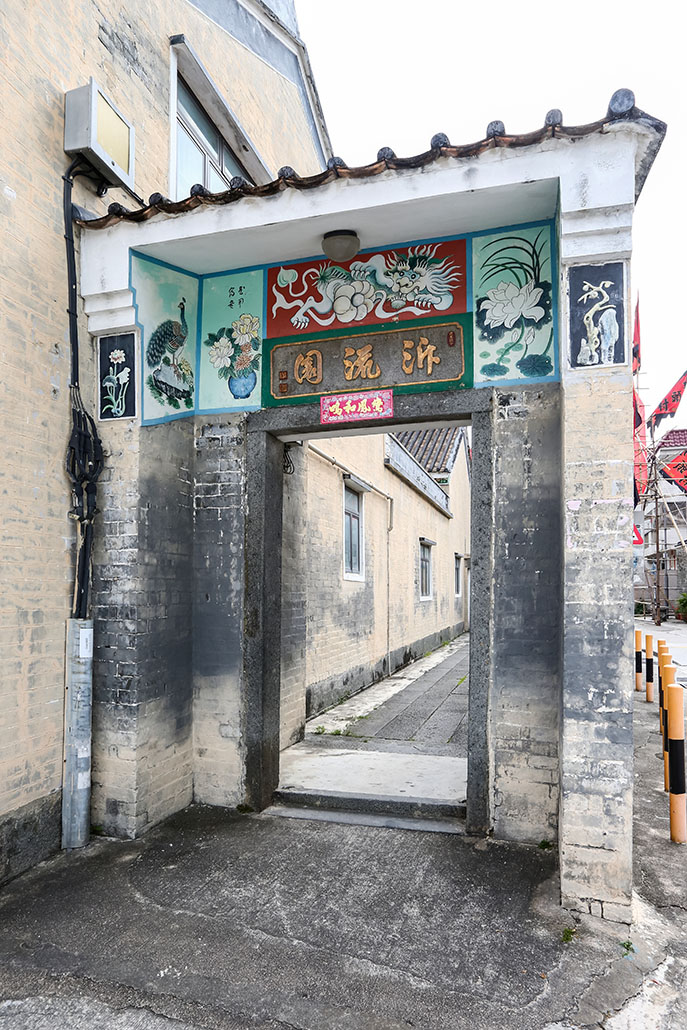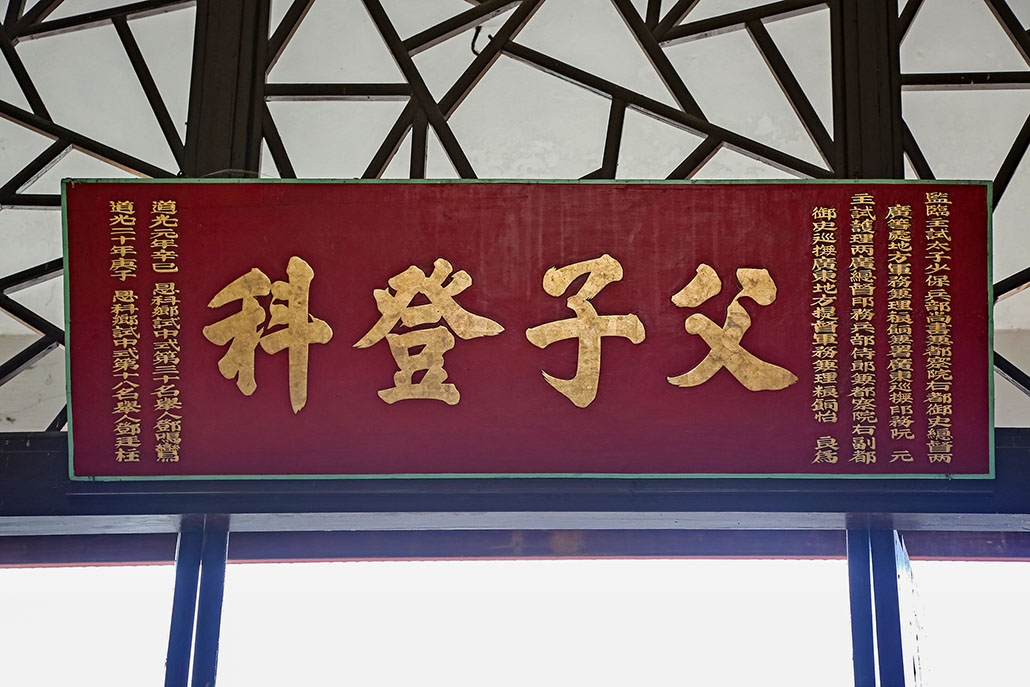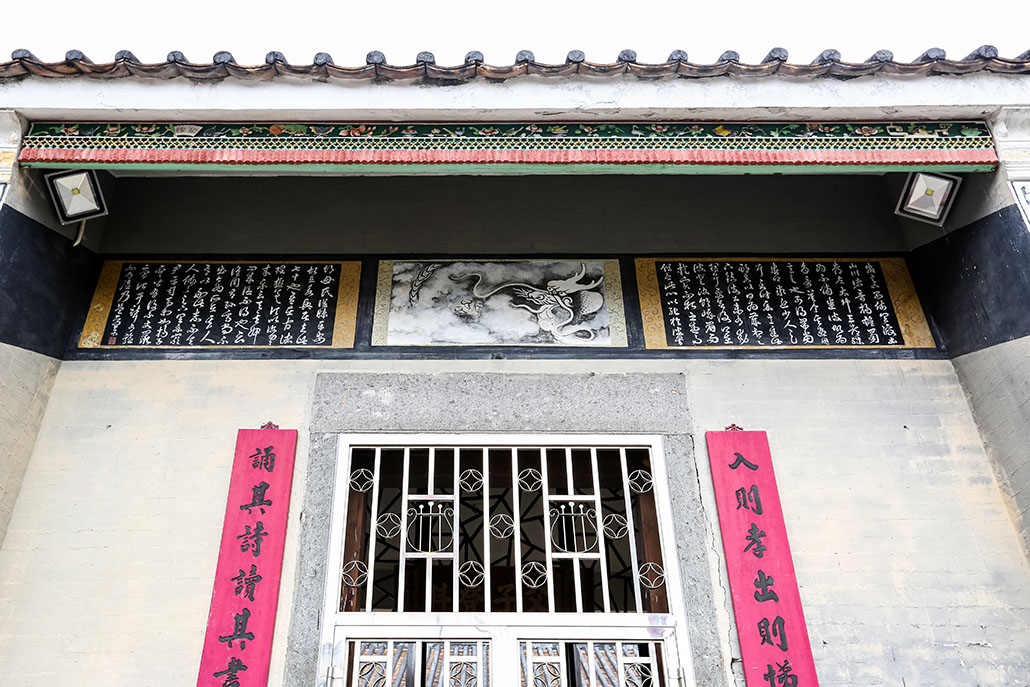Located in Shui Tau Tsuen, Kam Tin, So Lau Yuen is also known as Gi Ka Tong. It was built by Tang Kuen-hin, the twenty-first generation ancestor of the Tang clan in Kam Tin, in the late eighteenth century to prepare young clansmen for the Imperial Civil Service Examinations. During the reigns of Qianlong (1736–1795) and Daoguang (1821–1850) of Qing dynasty, numerous descendants of Tang Kuen-hin passed the Imperial Civil Service Examinations as wujuren and xiucai. Among them, Tang Ming-hok, the second son of Tang Kuen-hin, served as a sixth rank official in the imperial court. He subsequently built Cheung Chun Yuen to help young clansmen prepare for the military imperial examinations. The plaque in the front hall, with the inscription Fu Zi Deng Ke (Father and son enter officialdom), was presented by the Viceroy of Guangdong and Guangxi, Ruan Yuan, and the Governor of Guangdong, Yi Liang, to congratulate Tang Ming-luen, the third son of Tang Kuen-hin, and his son Tang Ting-chu on passing the military imperial examinations as wujuren in the first and twentieth years of Daoguang reign of Qing dynasty (1821 and 1840) respectively.
So Lau Yuen is a Lingnan traditional grey-brick building in a two-hall-three-bay layout. The walls and ridges are adorned with plaster mouldings depicting auspicious plants and animals; and the main façade is decorated with mural paintings featuring auspicious patterns and calligraphy, reflecting the artistic characteristics of Lingnan traditional architecture. The calligraphy on the plaque at the entrance of So Lau Yuen was written by Tang Ying-yuen who passed the military Imperial Civil Service Examinations as wujuren in the fifty-fourth year of Qianlong reign of Qing dynasty (1789). Tang lent his calligraphy works to various traditional buildings in Kam Tin, and sponsored the compilation of Xin’an Xianzhi (Gazetteer of Xin’an County) in the twenty-fourth year of Jiaqing reign of Qing dynasty (1819). His contributions to the region were immense.
Members of the Tang clan who passed the Imperial Civil Service Examinations joined the local gentry and managed affairs in Kam Tin on behalf of the government. Therefore, the main hall of So Lau Yuen was also used as a court to resolve clan disputes. With the establishment of Kam Tin Mung Yeung Public School in 1926, So Lau Yuen gradually dropped its function as an educational establishment. In 1952, it stopped offering classes, as most students had transferred to Kam Tin Mung Yeung Public School. The building now serves as the headquarters of the lion dance team of Shui Tau Tsuen, Kam Tin (founded by the descendants of Tang Kuen-hin), as well as a venue for the descendants of Tang Kuen-hin to hold gatherings during festivities.
Address:
No. 25 Shui Tau Tsuen, Kam Tin, Yuen Long, New Territories.
Not open to the public





